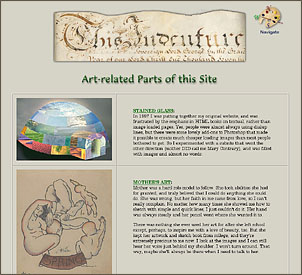brilliant and powerful colorist, and his pictures reveal an amazing facility in the rendition of
textures, which, even in the black and white reproduction of "A Midsummer Siesta," can be distinctly
observed. Another of the Paris artists, although only by adoption, is Miecislaw Reyzner. He is of
Polish origin, and studied at the Munich Academy and at the Paris Ecole des Beaux Arts. The success
he attained with pictures of the dainty, decorative order of his "Morning," encouraged him to settle
permanently in Paris, where he speedily found substantial support. Caspar Ritter, of Carlsruhe, is a
favorite German painter of subjects of sentiment. His "Consolation in Song" is a realization of the
German version of our familiar English proverb, "Music Hath Charms."
At the Salon exhibition of 1891, a picture which attracted a marked amount of attention was a
vividly painted midsummer landscape, with the figures of three wood-nymphs, basking in the flood
of golden sunshine. It was entitled "Summertime." The painter was A. Axilette, a Parisian artist
whose studio was already well known to collectors. The success of "Summertime" in Europe was
enormous. It was successively exhibited at various continental exhibitions, and everywhere
repeated the hit it had made in France. It was, in fact, one of those works of which it is
said that they "make" their authors, and in the sense that it completely established the painter's
reputation, "Summertime" realized this figure of speech.
It will be noted, from these examples, that they conform closely to the title of this work. They
are essentially modern, in every quality of conception and execution. The great and celebrated
works of figure art of the first half of the present century, and those of the remoter past, are
familiar to all persons of cultivated tastes and a love for the beautiful. The immortal productions of Titian and
Back Forward
Chapter 1 Text
Rene-Joseph Gilbert
|
|





![]() Copyright © 2007, Mary S. Van Deusen
Copyright © 2007, Mary S. Van Deusen